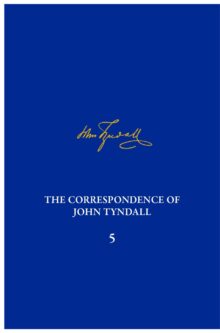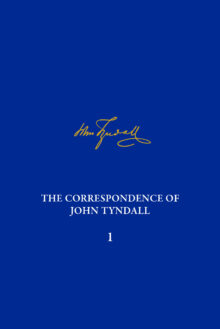
Geoffrey Cantor
Geoffrey Cantor is professor emeritus of the history of science at the University of Leeds and senior honorary research associate at University College, London. He is past president of the British Society for the History of Science. His research has focused on nineteenth-century British science and his publications include studies of Michael Faraday, the Great Exhibition of 1851, and the interrelations of science and religion.
The Correspondence of John Tyndall, Volume 5
The Correspondence, January 1855–October 1856
This volume contains 266 letters covering a period of twenty-two months, when Tyndall was in his midthirties and had been employed by the Royal Institution as professor of natural philosophysince September 1853. Many of the letters printed here concern the lectures he delivered at the RI and other institutions and his attempt to establish his reputation as a researcher. Although he published in several other areas—including the cleavage of rocks, colorblindness, and glaciers—the main focus of his research was the newly discovered and problematic phenomenon of diamagnetism. Tyndall reported his experimental results and theoretical views on this subject in several lectures and papers that greatly enhanced his scientific standing, which was further extended by his contact with other scientists, not only in London but across the British Isles and in France and Germany. By the end of this period, Tyndall was a man of science with a European reputation that was recognized in November 1856 when the Royal Society elected him a member of its Council.
The Correspondence of John Tyndall, Volume 1
The Correspondence, May 1840–August 1843
The 230 letters in this inaugural volume of The Correspondence of John Tyndall chart Tyndall’s emergence into early adulthood, spanning from his arrival in Youghal in May 1840 as a civil assistant with just a year’s experience working on the Irish Ordnance Survey to his pseudonymous authorship of an open letter to the prime minister, Robert Peel, protesting the pay and conditions on the English Survey in August 1843. The letters, which include Tyndall’s earliest extant correspondence, encompass some of the most significant events of the early 1840s. Tyndall’s correspondents also discuss their experiences of British military expansion in India and economic migration to North America, among other topics. The letters show the development of many of the traits and talents, both mathematical and literary, that would subsequently make Tyndall one of most prominent men of science in Victorian Britain. They also afford broader insights into a period of almost unprecedented social upheaval and cultural and technological change that ultimately shaped Tyndall’s development into adulthood.


